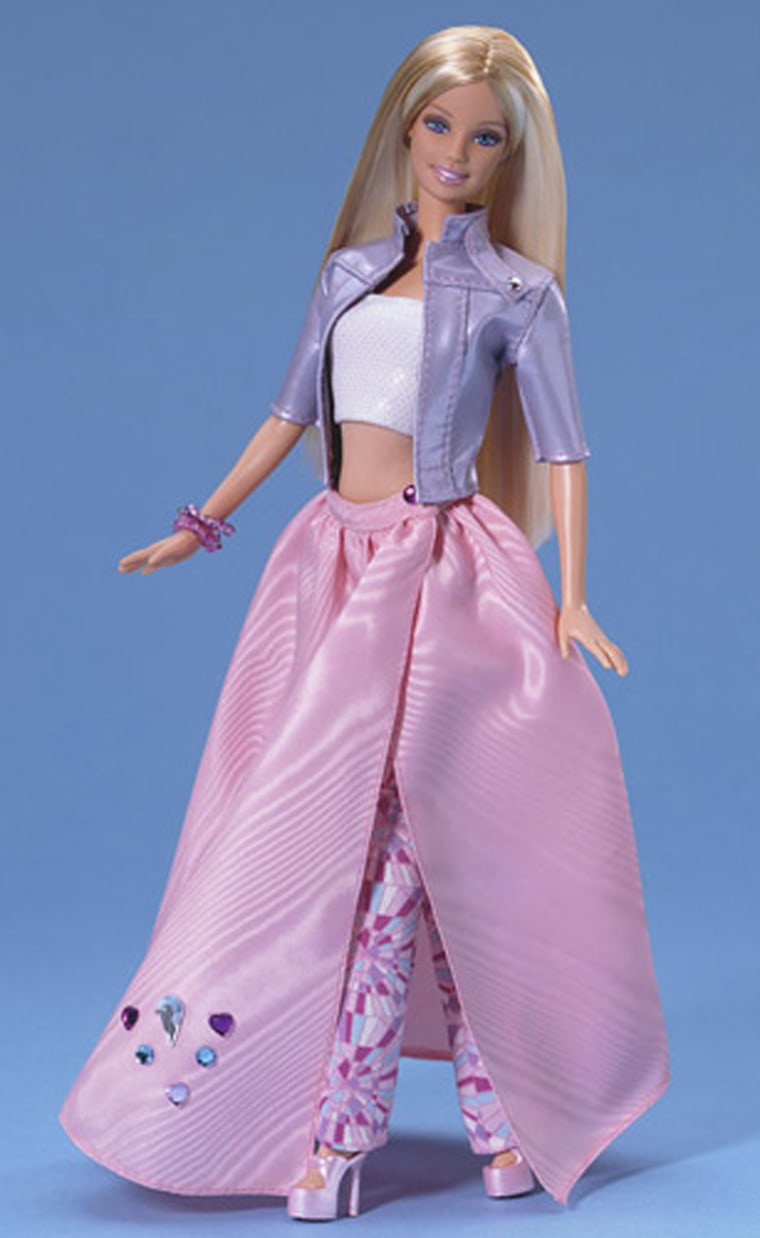Anisha Katyayan likes her five Barbie dolls. Not a day goes by that she doesn't change her dolls' clothes. They go from crown-wearing princesses to brides to beach beauties. But Katyayan, 6, is slowly losing interest in Barbie as her attention is grabbed increasingly by computer games and other toys. One of her current favorites is a cash register, which lets her pretend to selling things at the grocery store. Six months ago, her Barbies were transformed several times a day, but now once a day seems to be enough. "I like playing on the computer more these days," says Katyayan, of Nesconset, N.Y.
Katyayan provides a window into the challenges these days for Mattel, the maker of Barbie. On July 17, the El Segundo, Calif. company reported second-quarter results that beat analysts' expectations. Sales rose 8 percent, to $957.7 million, while net income came in at $37.4 million, vs. a $94.0 million loss in the year-earlier period. Barbie sales in the U.S. were up 2 percent, led by the Mermaidia and Barbie Princess lines, both based on characters in Barbie movies released in the past two years. Investors were jubilant, with the company's shares rising 11 percent, to close the day at $17.63.
But a close look at the latest results shows that they're less than reassuring. Sales for the iconic Barbie fell 1 percent worldwide, the 11th consecutive quarter of decline for the franchise. Indeed, it's a worrying sign that kids like Katayan are starting to eschew Barbie for other, more interactive toys. Even executives are wary of cheering the sales increase in the U.S. "It's obviously much too early to declare victory," Mattel Chief Executive Robert Eckert said in a conference call with investors.
Cloudy future
Wall Street analysts were cautious too. "Investors are likely to be encouraged by an apparent stabilizing in Barbie sales, but we caution against reading too much into off-seasonal results," wrote Elisabeth Osur, an analyst at Citigroup, in a research report. "Most new Barbie products will not enter stores until late summer/early fall, and much of the second-quarter strength was hit-movie related (and thus likely short-lived)."
Mattel has a number of top brands, including Hot Wheels, Fisher-Price, and American Girl. But "stabilizing Barbie goes a long way toward improving our operating performance," says CEO Eckert.
Fixing the Barbie franchise won't be easy. Brand and toy experts believe that dolls just don't capture the imagination of young girls anymore. According to research firm NPD Group, sales of dolls fell 2 percent in 2005, following a 6 percent decline in sales in 2004. And even within the doll segment, Barbie wasn't a leader anyway— large dolls saw an 18 percent surge in sales and sales of soft dolls rose 13 percent in 2005.
"Barbie is never going to be the profitable doll that she once was," says Robert Passikoff, president of Brand Keys, a brand strategy company. "The marketplace for toys has changed so dramatically."
Barbie goes digital
Indeed, the toy industry has been through a slump of several years. Last year, toy sales fell 4 percent, to $21 billion, and all categories — from cars and dolls, to stuffed animals — declined. Hasbro, another major company in the sector, will report its second-quarter earnings on July 24.
The key competition for traditional toymakers is electronics. Video-game sales rose 6 percent, to $10.5 billion. Mattel has tried experimenting with its franchise — there's a Barbie video game and also a Web site barbie.com, which attracts millions of viewers. But the efforts haven't done much to spur sales of Barbie.
Barbie is simply struggling to keep up with today's kids. They're used to characters such as Dora the Explorer, from the popular TV show on Nick Jr. "Dora, not only speaks in English and Spanish, but she interacts heavily with her audience with questions," says Ronald Goodstein, associate professor of marketing at Georgetown University in Washington D.C., and a consultant for Mattel in the mid-1990s. Dora also appeals to parents because she helps kids use their imagination and is surrounded by interesting characters like Boots the Monkey and Benny the Bull.
Barbie may need a more substantial makeover to appeal to the kids of today. Goodstein says that Mattel worked on reinventing the doll by reducing her breast size or giving her doctor and lawyer outfits to suggest better role models. "But that's just not cool enough—there's no reason why someone cannot skateboard, or explore the world like Dora, and not become a lawyer or a doctor," says Goodstein. Mattel may need to make Barbie more interactive and more digital to appeal children used to surfing the Web and listening to music on their iPods.
Brand Keys' Passikoff is more pessimistic. He says Mattel might just be trying to revive a brand that is too far gone. Instead, he thinks it should focus on creating the next big brand in the toy industry. "Barbie’s time has come and gone," says Passikoff.
